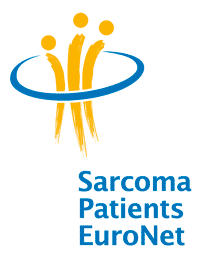 Bone sarcomas, also called primary bone tumours are very rare. They make up about <0.2 % of all malignant tumours, although the numbers vary country by country. As the name implies, malignant bone tumours are found throughout the bones of the body, but also in the cartilage.
Bone sarcomas, also called primary bone tumours are very rare. They make up about <0.2 % of all malignant tumours, although the numbers vary country by country. As the name implies, malignant bone tumours are found throughout the bones of the body, but also in the cartilage.
Please note: Bone sarcomas are tumours that start in the bone. Metastases of other types of cancer (such as breast or prostate) are bone metastasis, not primary bone cancer, and need to be treated differently.
The most common bone sarcomas are osteosarcoma, Ewing’s sarcoma, chondrosarcoma, giant cell tumours and chordoma with osteosarcomas and chondrosarcomas being the most frequent, accounting for over half of all the malignant bone tumour diagnoses.
- Osteosarcoma is the most frequent primary cancer of bone. It is estimated that per year, 2-3 persons in one million are affected by it. It occurs more often in adolescents (age 15-19), where it accounts for >10 % of all solid cancers, with a slightly elevated number of diagnosis in males. There is another peak of incidence at age >70.
- Ewing’s sarcoma (ES) is the third most common bone sarcoma. It occurs most frequently in children and adolescents, but is also seen in young adults. Median age at diagnosis is 15 years, with males being more often affected than females. ES is mostly found in legs and arms (50 %) and the pelvic bones (25 %), followed by the ribs and spine. ES may involve any bone and (less commonly in children) soft tissues.
- Chondrosarcoma is the most frequently occurring bone sarcoma of adulthood. About 2 out of one million people receive this diagnosis, commonly between 30 and 60 years of age.
- Giant cell tumours of bone are locally aggressive and rarely metastasize. They are most frequent in young adults and are more common in females.
- Chordomas are rare spinal tumours most frequently at the neck or pelvis (sacrum). They have an incidence of ∼
The causes of bone sarcomas are unknown. However, some risk factors have been identified that might lead to a higher probability of developing bone cancer. Among them are genetic predispositions, Paget’s disease and exposure to radiation.
The rarity of the disease combined with the need for a combination of different therapies make bone sarcomas very difficult to treat correctly. Therefore, please remember: All sarcomas need to be treated by specialists, if possible in specialized centers!

